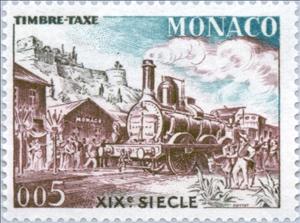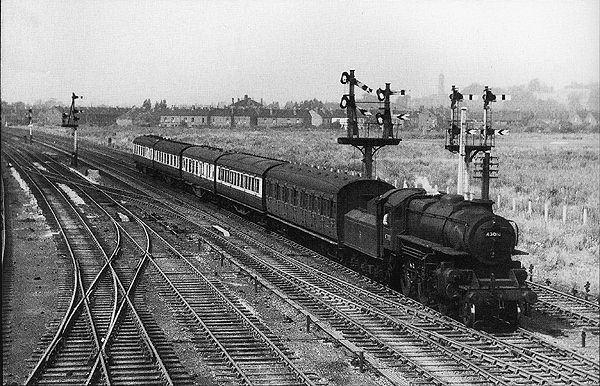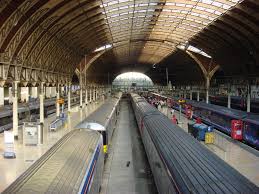Stamp: Steam locomotive Type 030 of the PLM (19th cent.) (Monaco 1960)
Steam locomotive Type 030 of the PLM (19th cent.) (Monaco 1960)
01 June (Monaco ) within release Post transport goes into circulation Stamp Steam locomotive Type 030 of the PLM (19th cent.) face value 0.05 Monegasque franc
| Stamp Steam locomotive Type 030 of the PLM (19th cent.) in catalogues | |
|---|---|
| Michel: | Mi:MC P61 |
| Yvert et Tellier: | Yt:MC P58 |
Stamp is horizontal format.
Also in the issue Post transport:
- Stamp - Mounted postman (17th cent.) face value 0.50;
- Stamp - Stagecoach (19th cent.) face value 1;
- Stamp - Sailingboat (18th cent.) face value 0.01;
- Stamp - Steamer 'La Palmaria' (19th cent.) face value 0.02;
- Stamp - Steam locomotive Type 030 of the PLM (19th cent.) face value 0.05;
- Stamp - Armed messenger (15th and 16th cent.) face value 0.10;
- Stamp - Postman on foot (18th cent.) face value 0.20;
Stamp Steam locomotive Type 030 of the PLM (19th cent.) it reflects the thematic directions:
The mail or post is a system for physically transporting documents and other small packages; or, the postcards, letters, and parcels themselves. A postal service can be private or public, though many governments place restrictions on private systems. Since the mid-19th century national postal systems have generally been established as government monopolies with a fee on the article prepaid. Proof of payment is often in the form of adhesive postage stamps, but postage meters are also used for bulk mailing. Modern private postal systems are typically distinguished from national postal agencies by the names "courier" or "delivery service". Postal authorities often have functions other than transporting letters. In some countries, a postal, telegraph and telephone (PTT) service oversees the postal system, in addition to telephone and telegraph systems. Some countries' postal systems allow for savings accounts and handle applications for passports.
Railways - Transportation system made up of metal rails which is designed to allow trains to maneuver on the tracks from one location to the next.
A metro station or subway station is a train station for a rapid transit system, which as a whole is usually called a "metro" or "subway". A station provides a means for passengers to purchase tickets, board trains, and evacuate the system in the case of an emergency. In the United Kingdom, they are known as underground stations, most commonly used in reference to the London Underground.
A building or edifice is a structure with a roof and walls standing more or less permanently in one place, such as a house or factory. Buildings come in a variety of sizes, shapes and functions, and have been adapted throughout history for a wide number of factors, from building materials available, to weather conditions, to land prices, ground conditions, specific uses and aesthetic reasons. Buildings serve several needs of society – primarily as shelter from weather, security, living space, privacy, to store belongings, and to comfortably live and work. A building as a shelter represents a physical division of the human habitat (a place of comfort and safety) and the outside (a place that at times may be harsh and harmful).
A fortification (also called a fort, fortress, fastness, or stronghold) is a military construction designed for the defense of territories in warfare, and is used to establish rule in a region during peacetime. The term is derived from Latin fortis ("strong") and facere ("to make").




